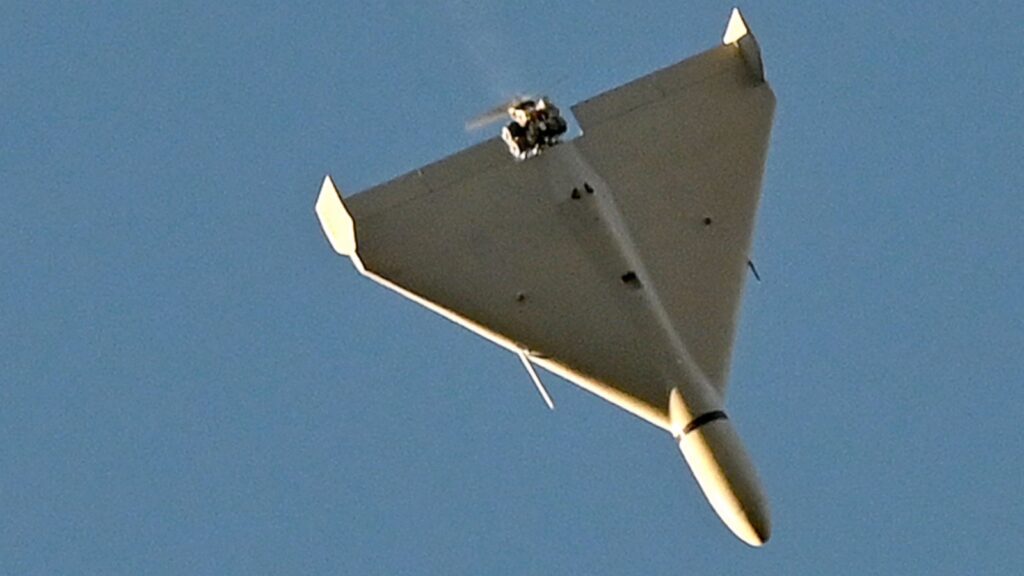Russia has reported a series of drone attacks across the country, including a strike on an airport hundreds of miles from Ukraine, which set at least two military cargo planes on fire.
Moscow has repeatedly accused Ukraine of being behind drone strikes in recent months.
Ukraine hasn’t claimed responsibility for these, although President Volodymyr Zelensky has previously said that attacks on Russian territory are an “inevitable, natural and absolutely fair process”.
How many drone attacks have there been in Russia?
BBC Verify has been monitoring reports of drone strikes in Russian media since the start of 2023.
According to these, there have more than 190 suspected attacks this year in Russia and in Russian-annexed Crimea.
The overnight attacks on 30 August are the most widespread we have monitored in one day since the start of the year, with drones hitting at least six regions in Russia from the south to the north-west.
One of the targets was an airbase in the Russian city of Pskov, which Ukraine’s military intelligence chief says was attacked from inside Russia – although he didn’t say by whom.
The strike set at least two military planes on fire, and a satellite image taken of Pskov Airport after the incident shows one aircraft completely destroyed.
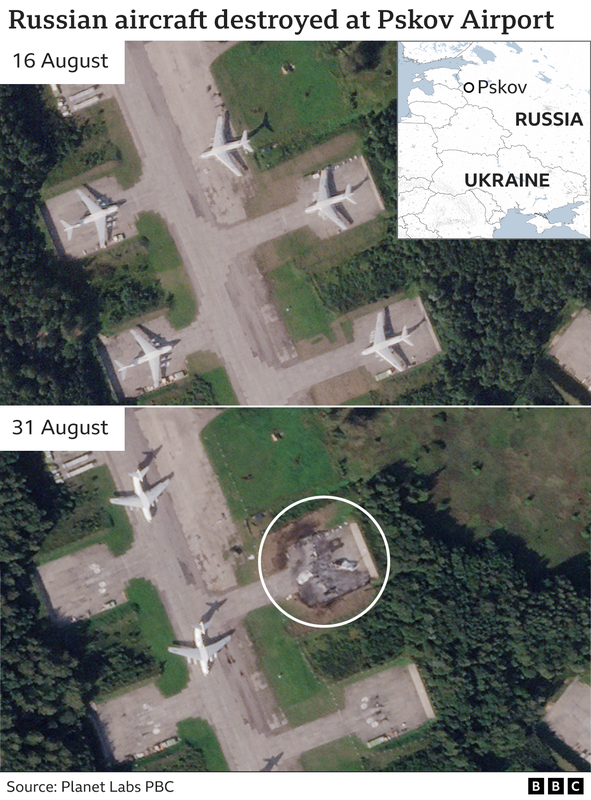
A suspected drone attack on 19 August left one of Russia’s flagship Tupolev Tu-22 bombers ablaze at an airbase south of St Petersburg, according to footage verified by the BBC.
In 2023 so far, drone attacks have been concentrated in the Bryansk, Belgorod and Kursk regions in Russia near the western border with Ukraine, as well as in Russian-annexed Crimea.
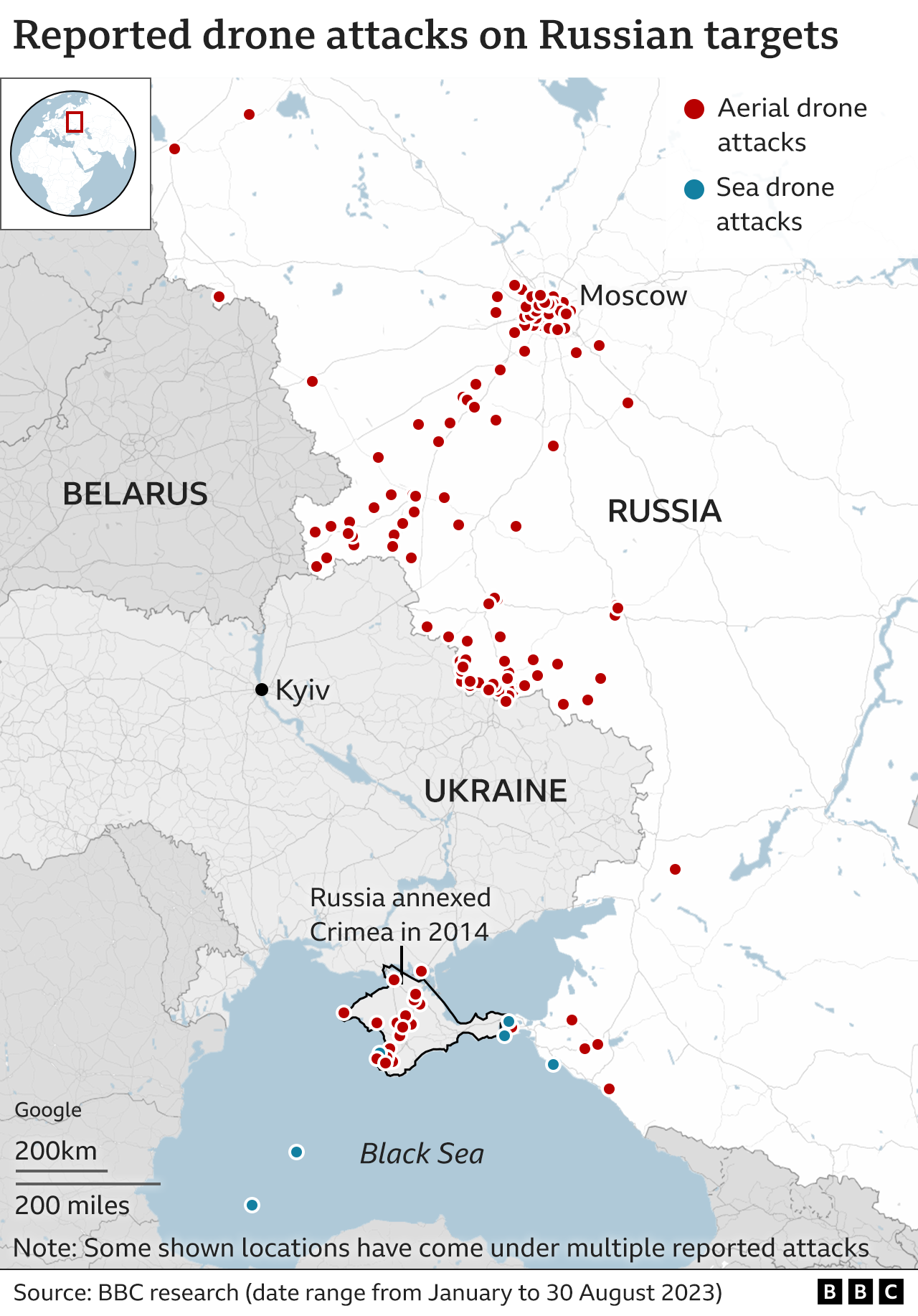
On August 23, three people were killed by a suspected drone attack in Belgorod, and five people were injured when a railway station was hit in Kursk region some days earlier, Russian officials say.
There have also been about a dozen sea drone attacks in 2023 on Russian targets in the Black Sea, including on naval bases and on the Crimean bridge.
Drone attacks on Moscow
Drones have reached the Moscow region, which is about 450km (280 miles) from the border with Ukraine.
There was a strike on a skyscraper under construction on 23 August and the Expo Centre exhibition complex in the capital several days earlier.
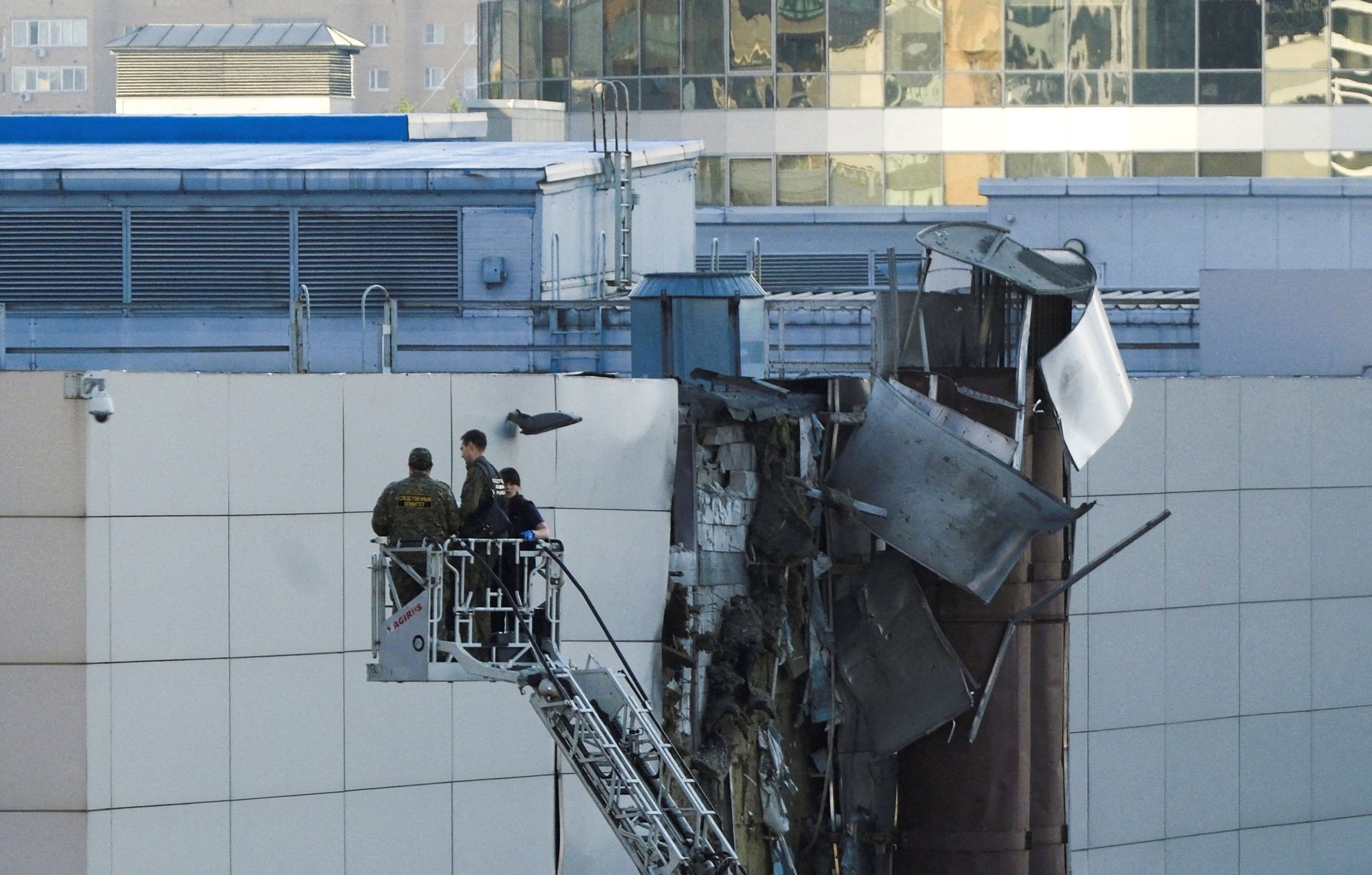
Flights were diverted from Vnukovo International Airport in Moscow after a drone attack on 4 July and the airport briefly closed following drone attacks on 30 July and on 1 August.
Russia accused Ukraine of trying to kill President Vladimir Putin in an alleged attack on his residence in the Kremlin in Moscow on 3 May – Ukraine has denied this.
Social media reports that several recent attacks on Moscow have involved drones of the “Beaver” type – a long-range attack aircraft said to be recently manufactured by Ukraine.
Drone specialist Steve Wright, of the University of the West of England, cross-examined images of these aircraft against verified footage strikes on Moscow on 30 May.
He concluded the two examples are consistent in design and the Beaver was “most likely” used.
In February, a drone crashed about 100 km (62 miles) from Moscow, in what the local governor said was an attempt to target civilian infrastructure.
A picture of the wreckage appeared to be consistent with a UJ-22 – a type of drone manufactured by Ukraine.
It has a range of 800km (497 miles) in autonomous flight. Its range under directly-controlled flight is much shorter.
Attacks on Russian infrastructure
Oil facilities, airfields and energy infrastructure have all been targeted in 2023.
We have identified at least nine reported drone attacks on oil depots. One of these was in Sevastopol, a major city in Crimea, which was hit on 29 April, destroying several of its oil tanks.

On 31 May, an oil refinery was set ablaze in Krasnodar Territory in southern Russia, about 200km (124 miles) from the Crimean border. The regional governor said it was probably caused by a drone.
Layla Guest, an analyst at Sibylline security consultancy, says: “Ukrainian forces will highly likely prioritise targeting oil refineries, as well as railway infrastructure and wider Russian logistics, to cause maximum disruption.”
How far can Ukraine’s drones fly?
Drones have been deployed by both sides in the conflict, with Russia using Iranian-made drones on targets in Ukraine.
Ukraine says it is rapidly increasing its production of drones as demand grows on the front line.
In terms of range, experts say drones launched from Ukraine could reach deep into Russian territory.
“Although Ukraine has not confirmed that its armed forces carried out the attacks [on Moscow], I think that the pre-emptive raids we have seen last year prove that Ukraine has the capability to launch long range attacks of that kind from within Ukrainian territory,” says David Cenciotti, editor of the Aviationist blog.
Drone specialist Steve Wright also said it was possible that a drone could hit the Kremlin having been launched from within Ukraine.
But he added: “My guess is that the drone was launched from far closer in than that, as this would avoid it having to run the gauntlet of much of Moscow’s defences.”
In April Ukraine’s Minister for Digital Transformation Mykhailo Fedorov boasted of a Ukrainian drone that “can fly from Kyiv to Moscow and back”.
Mr Cenciotti says: “Ukraine has made extensive use of several drones, with the Bayraktar TB2 drone emerging as the real star of the air war for Ukraine, inflicting heavy losses on Russian forces, some of those caught on tape and circulated online.”
Turkey has sold Bayraktar TB2 armed drones to Ukraine in recent months, while the Turkish manufacturer of the drones has donated to crowd-funding operations in support of Ukraine.
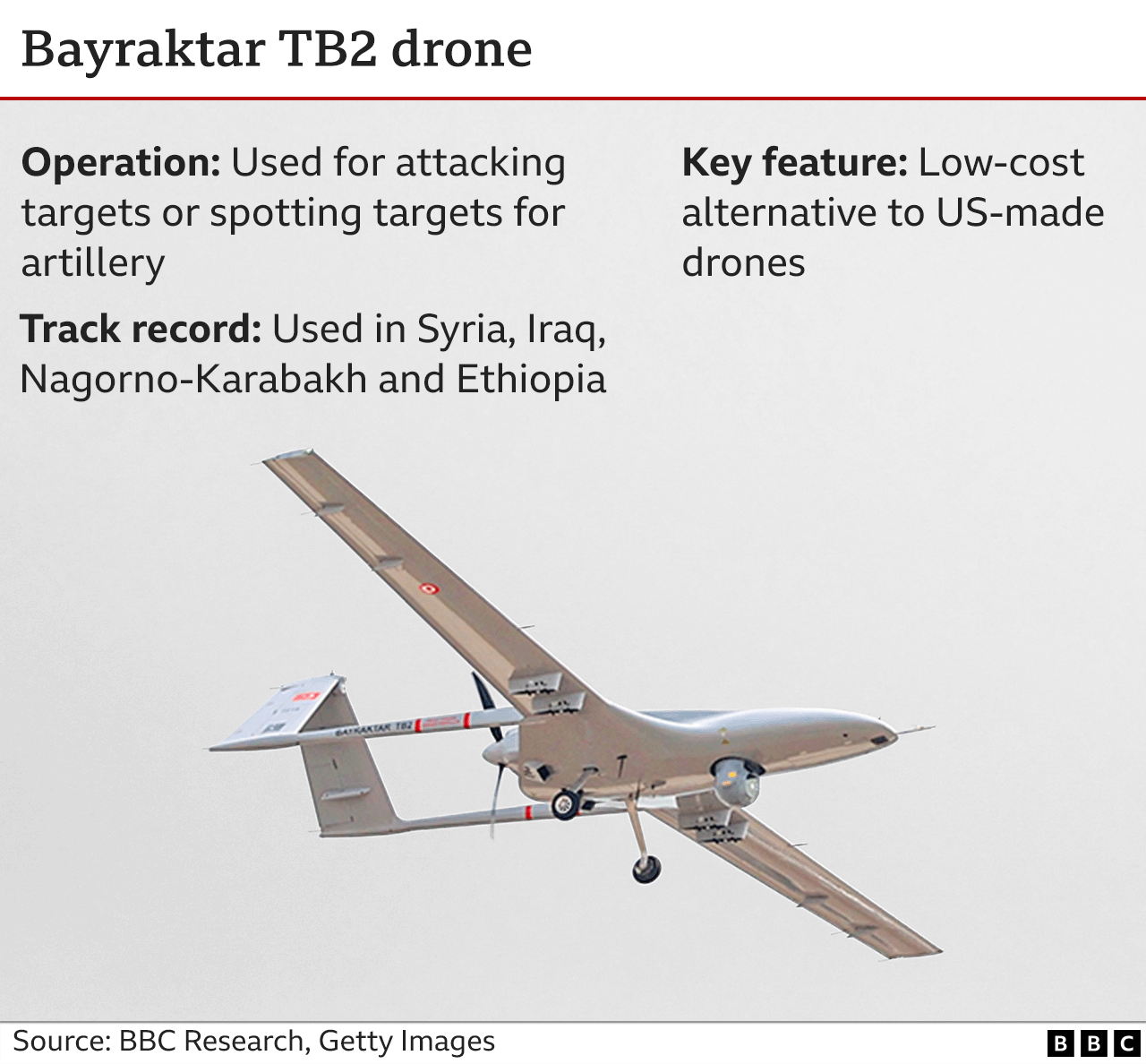
Source: BBC


